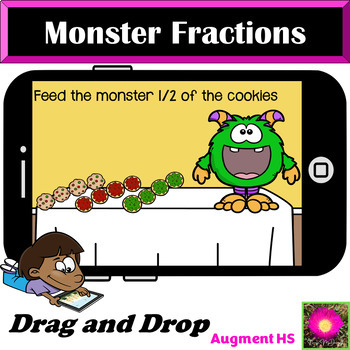Fractions Feed the Monster Boom Cards™
- PDF
Description
Fractions activities - Feed the monster - drag and drop digital resource.
This is a fun fractions maths exercise. The child will look at the 12 cookies provided in a grid pattern and work out the fractions of cookies that need to be fed to the monster. They then drag the correct number of cookies to the monster which represents the fraction. eg 1/3 of the 12 cookies would be 4 cookies that can be fed to the monster. The cookies will disappear as the monster eats them. Once the cookies are fed to the monster the child can hit submit for the next slide.
This deck is self-grading and would be useful to practice for maths tests and build maths sense when learning fractions. The cards randomize, so the deck can be used multiple times to practice factions, as the student can not remember the sequence of cards.
You may also like
Fractions, Percentages and Discounts Worksheets Click Here
Fractions and Percentages Bundle Click Here
Fractions Construction Theme Drag and Drop Boom Cards Click Here
Fractions Spring Flower Craft Click Here





